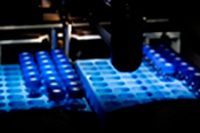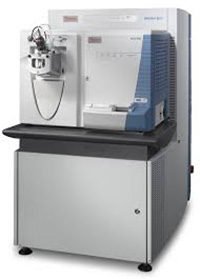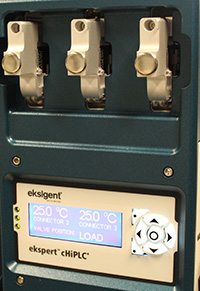APAF Newsletter Vol. 4 No. 2
Welcome to APAF's Christmas 2014 newsletter.
As 2014 draws to a close I would like to take this opportunity to thank all of our customers and collaborators for entrusting APAF to provide you with high quality and professional proteomic services.
Earlier this year, APAF was the first provider in Australia to introduce SWATH-MS as a leading-edge technique for label-free proteome quantitation. We have seen tremendous improvements in quantitative accuracy and depth of coverage using this approach and already delivered new data to several research teams. We installed Australia’s first AB Sciex TripleTOF 6600 mass spectrometer and coupled it with SWATH acquisition and are now able to offer this improved platform to researchers Read More
Amino Acid Analysis of Protein mixtures

Amino acid analysis remains the gold standard for determining protein concentrations in biological specimens. APAF has provided AAA for Australia’s academic and industry researchers since 1995. AAA can be carried out on free amino acids or by total protein hydrolysis.
Total Amino Acid Analysis
Amino acid analysis at APAF is performed using liquid hydrolysis in 6M HCl followed by quantification using a pre-column derivatisation reversed phase (RP) HPLC procedure. The procedure employed is based on the Waters AccQTag amino acid analysis methodology but has been improved to run on an Ultra Performance liquid chromatography (UPLC) system. APAF has three dedicated UPLCs for AAA with a weekly capacity for analysis of 100 samples. Read more
Quantitative and comparative protein analysis by mass spectrometry using TMT

APAF is pleased to offer quantitative analysis on Orbitrap mass spectrometers using Amine-reactive TMT10plex™ and TMT6plex™ labelling reagents. The benefit of using TMT reagents is sample multiplexing which reduces the time and cost of analysing large numbers of biological samples. As with other isobaric tagging reagents (e.g. iTRAQ), peptides labelled with TMT and mixed together for analysis share the same precursor peptide mass and can be selected for MS/MS sequence analysis. Read More
SWATH label free mass spectrometry

Whole proteome analysis has traditionally been performed using data-dependent “Discovery proteomics”. While an important identification and discovery technique from a quantitative perspective it lacks reproducible selection of peptides to ensure sample-to-sample quantitation. Alternative approaches for quantitation that have been widely used are chemical tagging methods (e.g. iTRAQ or TMT) or metabolic labelling (SILAC), as these allow reliable relative quantitation between samples. Multiple reaction monitoring (MRM) MS is the gold standard for quantitation as it is highly selective and sensitive and compatible with use of isotope labelled standards. However, MRM requires prior knowledge of the analytes to be measured and acquisition methods can be laborious to develop.
Recently, with the development of faster acquisition mass spectrometers a new approach that combines discovery proteomics with reproducible quantitation has been developed. This new technique is now deployed at APAF and referred to as “SWATH-MS”. This new technique does not rely on prior knowledge of the precursor peptide ions and acquires information in a Data Independent manner. With the use of spectral libraries, SWATH-MS can be deployed to reproducibly measure the same peptides across all samples, eliminating quantitation “gaps” often seen from sample-to-sample in traditional proteomic experiments. Read More
